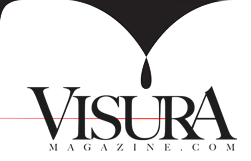
Since 2010, I have been documenting the passage of Central American men, women and children while attempting to cross the borders from Honduras to Guatemala through Mexico and into the United States. I interviewed and photographed victims and survivors, and for the ordeal they went through, I think of many of them as heroes. Meanwhile, I have witnessed the desperation that drives a person to leave his or her family, home, and country in the hope of a better life.

This project began as a collaboration with Voces Mesomaericanas, an initiative from several different NGO’s working on migration issues in Central America and Mexico. At the onset, I arrived in Tegucigalpa, Honduras in early September 2010, where I met different associations and people working on migration related issues. From Tegucigalpa, I traveled to Cedros, a rural municipality in central Honduras, north west to San Pedro Sula, a town closer to Guatemala. Then I went to Ocotepeque, which borders Guatemala, where I saw migrants crossing the Mexican border to Guatemala or being deported.
From here, I traveled to Guatemala City, where I visited a migrant shelter and other associations who work closely with migrants. After that, I went north of Guatemala to Peten, a region completely controlled by narcos. As I traveled to La Técnica and Bethel, I began to understand how the Coyotes—the name for smugglers who facilitate the migration of people across the United States border—work and how well organized they were. The local Coyotes did not like the fact that I was around. The further in depth I went—as a stranger and foreigner—the more difficult it became to have access to where and when emigrants were crossing the border to Mexico.
To leave this town, a local cooperative director had to protect me, as I got on the boat to Mexico.
Back in Mexico, I went to Palenque. Here many emigrants take the train to go north to Veracruz, the main area controlled by the Zetas gang, a criminal organization in Mexico. Once I arrived in Veracruz, I went to Medias Aguas where the two train lines from Tabasco and Chiapas meet. It is at this point where gangs—mainly the Zetas Cartel—kidnap migrants every day. Naturally, it was very difficult to know who to trust, when many migrants were being watched by informant-migrants working for the Zetas.
From Medias Aguas, I traveled through Tierra Blanca to La Patrona. Here, I met a group of women, who voluntarily provide food and water to migrants traveling by train. Although these women have a job and a family, they still find time to work in supermarkets in exchange for bread. They prepare bags with tortillas, meat, rice, bread and water to give to migrants as the train passes through La Patrona. Two to three times a day, these women run to the train tracks to deliver their bags as the migrants hang from the train carriages to reach for them.
After La Patrona, I traveled to Puebla until I reached Lecheria, near the Federal District in Mexico, where migrants take a train north; there is also a migrant shelter in this town. I took a plane from Lechería to Hermosillo and from there I went to Nogales, a town bordering Arizona.

I spent time with the Samaritans in Tuscon, Arizona, a diverse group of people that look for migrants in the desert to help them in any way they can. Together we headed into the Arizona desert, though we were unable to find migrants. Instead, we found only water bottles and clothes, as well as border patrol agents guarding the area.
Although, I met with them, we were unable to find migrants. Instead, we only found water bottles and clothes, as well as, border patrol agents guarding the area.
In 2010, 253 migrants died in the Arizona desert trying to reach the United States of America.
I decided to return to Mexico and traveled to Ixtepec, Oaxaca, where I met Padre Solalinde, who runs a migrant shelter. A true inspiration, he is a devoted defender of migrants and is willing to risk his life for them. When referring to the high number of migrants being kidnapped across Mexico, Father Solalinde expressed that The money has reduced us to the level of goods. He shared one of the cruelest episodes of violence against migrants that took place in the Mexican state of Tamaulipas in July, 2010. Seventy-two men and women—from Honduras, El Salvador, Guatemala, Ecuador and Brazil—were executed in cold blood. Nearly all were young victims whose respective families could not pay the ransom money demanded by the executioners.
Many of these tragic cases are not covered with the media.
I continued my journey and traveled to Arriaga, Chiapas, where migrants catch the train up north towards Ixtepec. Then I went further south to Huxtla, still in Chaiapas, and visited a place called La Arrocera where migrants are usually confronted by local gangs. From Huxtla, I walked through the Arrocera with Jose Castro, 47, from Honduras, who left behind his wife and three children. We walked quickly and silently, and had no problems crossing the humid jungle that makes up the Arrocera. Finally, I went to Tapachula in order to visit the other part of the border with Guatemala where the majority of migrants cross by boat to Mexico.
During an interview with sociologist Alvaro Caballeros from Guatemala, he explained that migration is enforced. He said, Migration is forced and is not a search for the American dream. I think it is a response from the bottom, because of the lack of opportunities in work and education and inequality in their country.
According to Human Rights Watch, U.S. authorities deported over 340,000 immigrants in 2010. Meanwhile, Mexico deported about 60,000 people that were caught crossing through its borders on the way to the United States. The police, treat migrants as criminals, and sometimes, even attempt to extort money from them in exchange for letting them go.
In addition, according to the National Human Rights Commission of Mexico, some 10,000 migrants are kidnapped each year in Mexico. The captors primarily belong to the Zetas gang. These kidnapers demand between 1,500 and 5,000 dollars) in exchange for the hostages, depending on where the family lives (in the U.S. or their country of origin). If relatives cannot pay, the migrants, who are often from poor backgrounds, are executed. Their bodies are abandoned.
During the journey, I met numerous men, women and children searching for a better future, all of whom expressed their belief in God as the only one they can trust. To them God is always present. Faced with so much risk and injustice, they are willing to place their lives in God’s hands.
www.markelredondo.com





